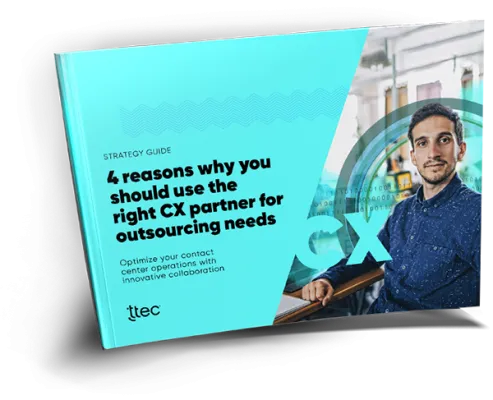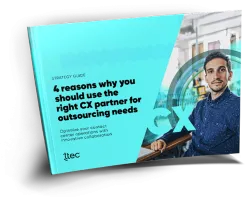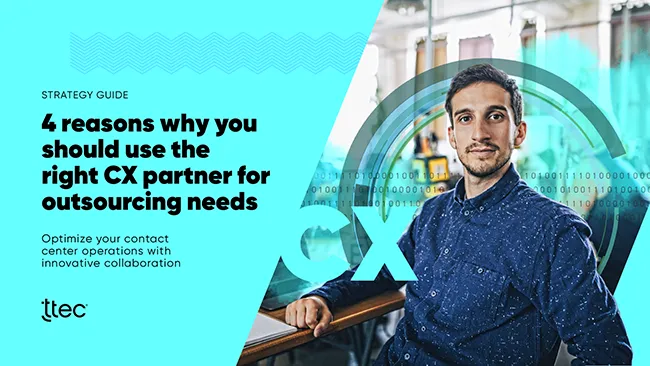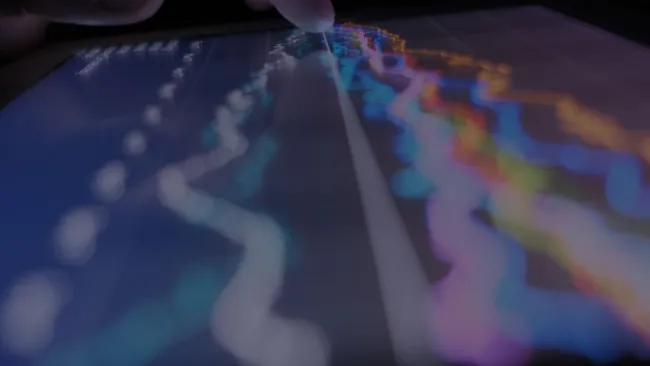The customer experience (CX) technology market is hot right now. The pandemic revealed just how poor most companies’ CX infrastructure is and exposed wide gaps in how companies interact with customers, especially through digital channels. As a result, many companies have re-prioritized digital initiatives and are taking a hard look at their customer-related operations. In fact, Grandview Research predicts a 250% increase in CX spending by 2027.
Customer journey orchestration, digital channel expansion, AI and RPA are just a few examples. But the old ways of CX implementation won’t work anymore. The pace of change has accelerated to the point where long-term implementations are outdated before they are even launched. Customers demand immediate innovation to match the likes of Amazon. To help brands in this new normal, TTEC is partnering with clients looking to take an incremental, cloud-based approach to CX improvement that we call Customer Experience as a Service (CXaaS).
CXaaS serves the holistic customer experience with a mix of technology-enabled optimisation, automation, analytics and continuous improvement. It is not only the backbone but also the launch pad of true digital transformation. More than a technology refresh, CXaaS enables a foundational and cultural shift to digital, driven by innovation. It reimagines how a customer experience should be thought of, delivered, and paid for.
That’s where IT comes in. Most often, IT initiatives deliver big hardware/software implementations based on contact centre operational requirements. These can take years and get mired in operational and technical obstacles along the way. They typically focus on one slice of the customer experience, not the big picture. And the metrics for success tend to be operational and cost-driven, and not aligned with customer success metrics on the business side.
With CXaaS, IT aligns with the business and CX partners to continuously make improvements across all facets of the customer experience that build on one another. Rather than consider IT as a cost centre responsible for capital expenditures (CAPEX), it plays an important role in managing recurring operational expenditures (OPEX) that can be mapped to revenue growth and cost savings. These benefits are then re-invested to drive even more benefit and continuous improvement. The focus is on meeting digital business customer-orientated objectives with enabling technology, not having just a sole technology focus.
IT is CXaaS’ secret weapon
In our work with clients developing CXaaS programs, IT has emerged as a critical partner to help sustain momentum and avoid pitfalls during the strategy, contracting and execution stages of CX initiatives. Here are six ways that an engaged IT partner can improve CXaaS projects within the contact centre and throughout the customer experience.
1. Bridge the gap in the customer journey
Often the biggest impact on CX is outside of the responsibility of the customer-facing operation. In many sectors the back-office systems are key to complete the customer journey—paying an insurance claim, confirming the delivering of an item, etc. Integration with these operations and the associated systems and data is critical to achieving the desired customer outcomes. This can be tricky as often they are core legacy systems that can be bespoke to the brand’s operation and have a long backlog of changes and upgrades, not to mention huge risk management sensitivity.
The IT organization is best to know if, how, and when integration is possible and can plan and mange expectations as well as accelerate the priority of the customer integration. Without this forward thinking, the delivery of the business benefits can at best be reduced and at worst, severely delayed.
Successful integration requires co-working between the provider and the brand – not just defining the data flows required, but also who does and is responsible for what.
2. Share objectives and metrics
IT is largely measured on cost savings and time to implementation. With CXaaS, there’s recognition that technology helps drive other important metrics further down the value chain like cost-to-serve, customer satisfaction, employee longevity, reduced training costs and more. Both the business and technology side can share ownership of these metrics and outcomes. Each stakeholder group extracts value from the others’ systems (CRM data, ERP info, contact centre analytics, training results, performance management, etc.) to create a cohesive, interconnected end-to-end customer journey. It’s critical that there is transparency among all stakeholders (including IT) to set realistic goals and metrics focused on outcomes.
3. Mitigate financial risks with short-term commitments and flexibility
Clients are often stuck with long-horizon IT projects because of a long, drawn-out investment process needed to purchase and implement software and hardware. Many tech vendors require multi-year contracts to lock up revenue and keep clients in their programs. Switching is often too much hassle.
A CXaaS model doesn’t depend on one specific hardware or software, so it can move at pace. IT organisations will still provide input or direction on CX technology to create an optimal program, but leave the daily technology set up and maintenance to a CX partner while focusing on their own core IT needs.
IT should be at the table when operations and CX partners decide on the technology to be used within the CXaaS model, but also negotiate the right to change technology if the needs of the program change. Their input upfront is invaluable to save headaches down the road.
4. Actively participate during contracting
In the contracting stage, IT can provide valuable insight in a number of critical areas. As mentioned above, they can partner with the business and CX partners to negotiate the types of technology to use, and what parameters would be acceptable to warrant switching during the program. In addition, during the RFP process they can provide CX partners with a better understanding of the types of CX data available at the client from day one, so that there is a clear knowledge of how transformative the project will be.
5. Reveal hidden value found in customer data
Customer data is the life-blood of a customer-facing operation. The systematic analysis and exploitation of customer data allows an operation to optimise efficient and effective customer interactions that ultimately will deliver competitive advantage. However, traditional IT organizations view customer data through a security lens: How secure is it, what geographical or functional siloes does it sit in, and which systems can access it? Yet customers often share data with a company because they expect value in return. With a strict security focus, there is a missed opportunity to extract the full value that customer data holds.
A CXaaS model is built on a foundation of data and insights. Working with the business and CX partners, IT can share their data expertise and expand their work beyond security to garner insights hidden in databases. They can also advocate for the safe use of that data by the business to strike an important value versus risk balance.
6. Futureproof your CX
A CXaaS model is built on joint work between a company and CX partner. Sometimes it is not clear as to who owns what both in terms of systems and the data they hold. So what happens when the contract ends? At what point does the brand take over or switch partners, and how is it done without impacting the customer experience? Having IT involved throughout the program will make these decisions easier and ensure seamless transitions as contracts end and new partners come on board.
Enable the CXaaS ecosystem with IT
CXaaS is designed to be more adaptable and flexible than traditional CX projects. It’s a team effort built on business objectives. But it can’t be done without underlying technology that is also flexible. Aligning IT with contact centre operations and the CX partner to create this ecosystem will generate the outcomes that companies (and their customers) are looking for, both today and tomorrow.
















